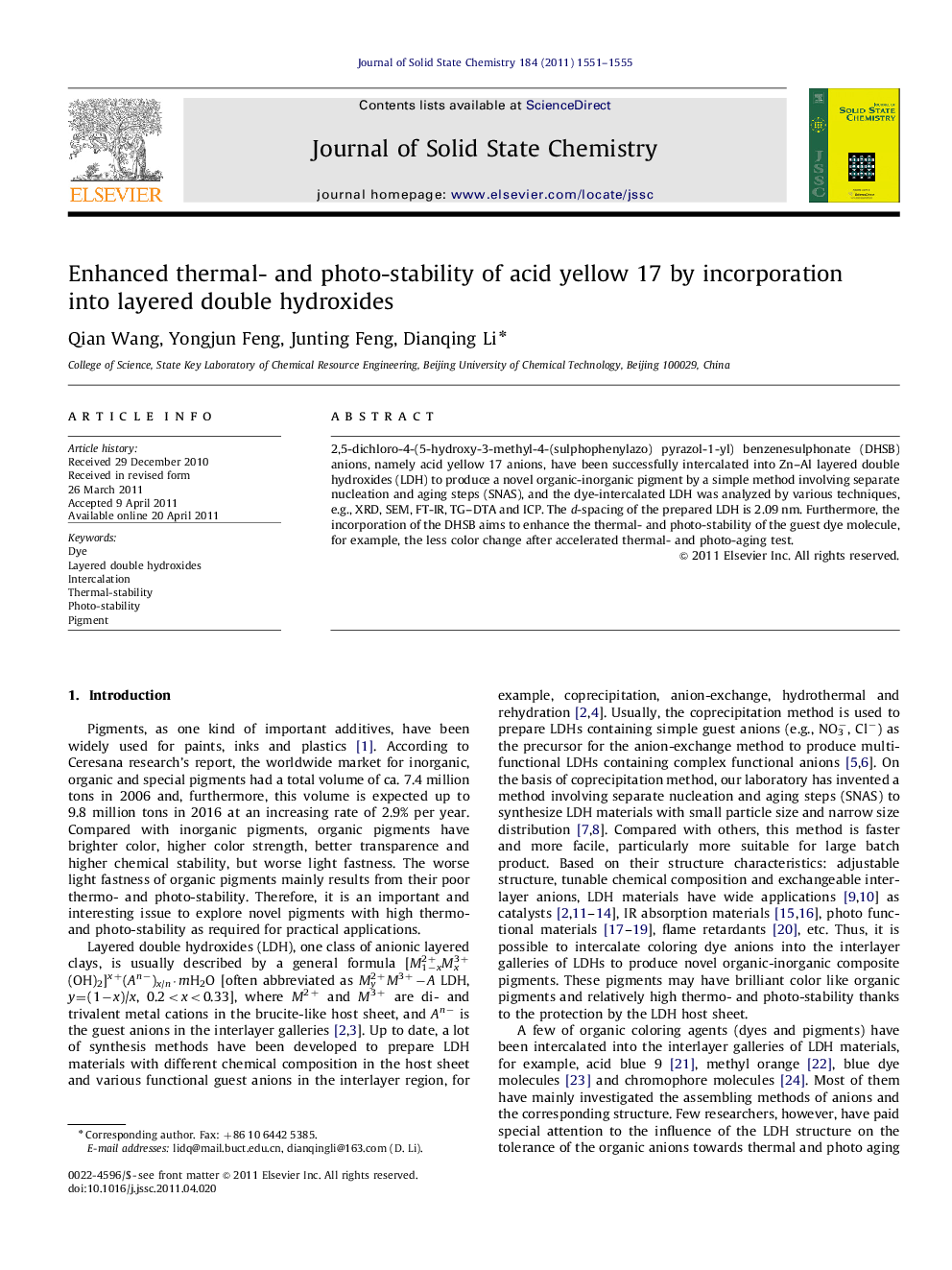| Article ID | Journal | Published Year | Pages | File Type |
|---|---|---|---|---|
| 1329136 | Journal of Solid State Chemistry | 2011 | 5 Pages |
2,5-dichloro-4-(5-hydroxy-3-methyl-4-(sulphophenylazo) pyrazol-1-yl) benzenesulphonate (DHSB) anions, namely acid yellow 17 anions, have been successfully intercalated into Zn–Al layered double hydroxides (LDH) to produce a novel organic-inorganic pigment by a simple method involving separate nucleation and aging steps (SNAS), and the dye-intercalated LDH was analyzed by various techniques, e.g., XRD, SEM, FT-IR, TG–DTA and ICP. The d-spacing of the prepared LDH is 2.09 nm. Furthermore, the incorporation of the DHSB aims to enhance the thermal- and photo-stability of the guest dye molecule, for example, the less color change after accelerated thermal- and photo-aging test.
Graphical abstractAcid yellow anions were successfully assembled into ZnAl layered double hydroxides (LDH) to produce a novel organic–inorganic composite pigment by a simple method involving separate nucleation and aging steps (SNAS).Figure optionsDownload full-size imageDownload as PowerPoint slideHighlights► Acid yellow 17 was directly intercalated into ZnAl-LDH to form a novel pigment. ► The pigment was prepared by a method involving separate nucleation & aging steps. ► The intercalation of dye anions enhances its thermal- and photo-stability.
